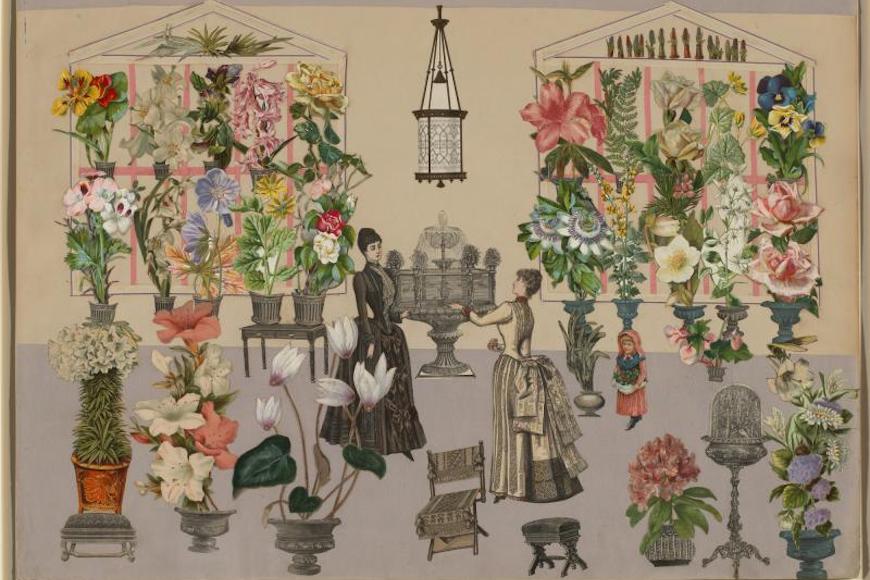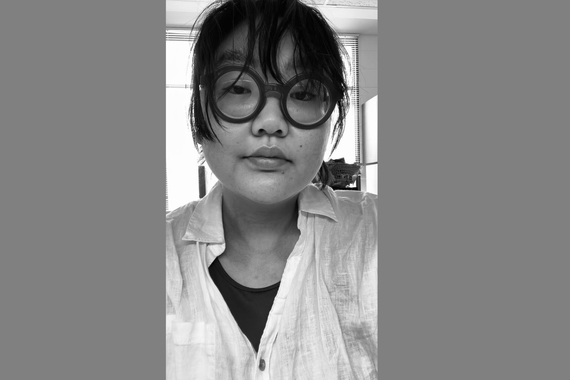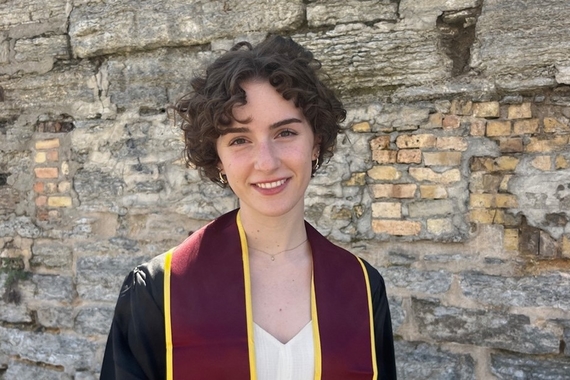Engaging with Everyday Creativity
Who invented collage?
It wasn’t Braque or Picasso. Decades before they coined the term, people were using everyday printed materials in their homes to create unique works of art.
“We just did not have the structural vocabulary to call it a collage—or to even call it art at the time,” says PhD candidate Christina Michelon. “People just thought of it as a domestic activity that women and children did to pass the time, so I'm really interested in thinking about these activities and giving these makers the creative attention that I think they deserve.”
Michelon’s dissertation examines how people in nineteenth-century America engaged with printed materials, such as magazines and wallpaper scraps, to create “printcrafts,” a concept she developed to describe all types of crafts that “play with prints.” Through her studies, she’s identified an interesting tension between the industrial and the handmade: a desire to take something that is mass-produced and make it unique.
The Print Room
Michelon became interested in this topic through co-curating a show at the Chipstone Foundation in Milwaukee called The Print Room in 2014, which explored how people collected and transferred prints onto a wide range of ceramics—everything from plates, pitchers, and teacups to chamber pots—starting around 1750.

That exhibition got her thinking about how people in the late eighteenth- and early nineteenth-centuries suddenly found themselves surrounded by printed materials in a way that they never had been before. New technologies were producing higher-quality prints on a larger scale than ever before, and the ability to print on materials other than paper opened up exciting new frontiers. Those advances meant that “all of a sudden people were using printed materials in new ways,” Michelon points out. “When you have a vessel with something printed on it, it’s joining your everyday life, and you’re engaging with it in a much different way than if it were just on your wall.”
The ceramics in the show were arranged in the style of an eighteenth-century “print room.” Americans and Europeans would collect prints from various centers of art and culture they visited on a grand tour. Upon returning home, they would cut up the printed souvenirs and arrange them on walls in elaborate, personalized art installments according to their own style.
Modern Victorian
Print rooms of the late 1700s were just one way people collected and arranged printed materials in their homes in this era. Michelon became fascinated by later Victorian crafts like scrapbooks, decoupage, and collage, some of which “demand your attention because they are so strange.” Her dissertation focuses on printcraft objects from 1820 through 1890.
That means she’s looking at everything from tables covered in prints to pictures of rooms made out of wallpaper samples, scraps of fabric, and catalog clippings. Some of the items she studies even appear to be ahead of their time. “These things look like they’re from the 1940s, but they actually date back to the 1880s,” Michelon says. “It’s this kind of weird work that I’m drawn to. This creative engagement with prints drives my dissertation.”
Shaping the Search
Materials like these have not previously been the subject of serious scholarship, a reality that has shaped Michelon’s research process. “Museums haven’t been collecting these crafts so I’m finding them in libraries and historical societies and even in antique shops,” she explains. “Thankfully, I’ve gotten a lot of support from the art history department to go to locations that have these materials. It’s important for me to see them in person to look at them closely and see how they’re made. You get a much better sense of the object when you see it in person.” It’s also important because these materials are rarely digitized. Seeing them in person is the only option.
In 2017 Michelon was a predoctoral research fellow at the Smithsonian and currently holds a Luce/ACLS fellowship. She credits these fellowships, along with additional support from the Center for Craft, Creativity, and Design; the American Antiquarian Society; and the Winterthur Museum & Library, with giving her access to archives and collections, time to focus on her research and writing, and connecting her with “this wonderful community of historians of American art. Being able to share my work with a broader audience and be able to listen and give feedback to my peers was invaluable,” Michelon says. “It helped me shape the way that I'm approaching the material and helped me refine the questions I'm asking.”
Redefining Creativity
And they are big questions. At the heart of what she’s doing is “giving people a different way to think about creativity.” Her research asks us to reconsider art history to include all forms of creativity, including those popular among women and children. “While it is important to study what we call ‘the canon,’ or work by famous, well-known artists,” Michelon explains, “it's important to diversify that group or to expand the work it includes. One way to do this is by looking at everyday acts of creativity.”
This fall Michelon will be the inaugural instructor of art history at the University of St. Thomas’ new Dougherty Family College. “I love to engage with material objects, and teaching classes has taught me that students really like that too,” she remarks. “I want to build that into classes I teach: bring the materials to them or bring them to the materials. I’ve already scheduled a collage-making day for my students as well as a trip to the Minneapolis Institute of Art. I want to give my students opportunities to engage with materials. That’s part of the magic we do in art history.



